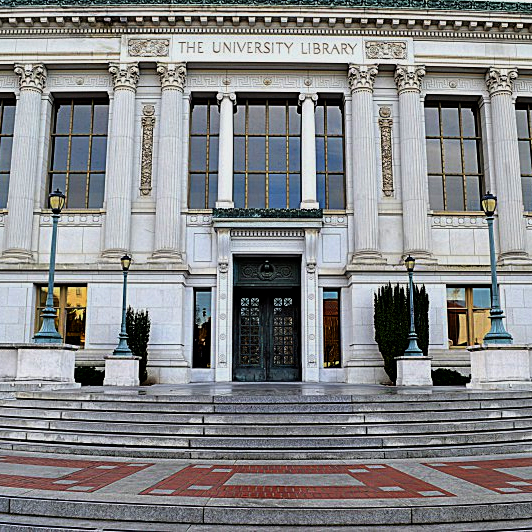How to Get to the Library (When You’re Stuck at Home)

UC Berkeley is renowned for its research output, yet many students and faculty members have had their research stalled by travel restrictions and building closures during the COVID-19 pandemic. After archive closures impeded her research on medieval Italy, Professor Maureen Miller, who normally focuses on the Middle Ages in mainland Europe, designed a course on Irish history to pass the time. A graduate student in sociology described to me how she’s experienced months of frustration and setback since she cannot travel to China to conduct the necessary fieldwork to continue her dissertation. These stories of halted research are common throughout the university.
Despite additional challenges and roadblocks to research, UC Berkeley’s 32 libraries have strived to make as much of their research material as possible available digitally. With Berkeley’s 1400 databases, 41 million books, and numerous primary sources, research is still possible.
The UC Berkeley library staff has put on several Zoom events during the remote semesters of Fall 2020 and Spring 2021 in order to show students and faculty how the library continues to be a vital resource. These events have included “How to Turn Research Topics into Research Questions,” “Resources of the Korean Collection,” and “Living Stories: Oral History Interviewing and Research,” which taught students how to use Berkeley’s collection of oral history as well as conduct their own oral histories.
A recent event, entitled “Literary Research: How to Research from Home (And Be Awesome!),” went over many of the library’s online resources and reviewed ways to access print material digitally. Although the event targeted undergraduates writing theses in departments such as English and Comparative Literature, the information was relevant to students and faculty conducting research in a variety of departments or anyone interested in accessing library material from home.
Online databases are often a great starting point. UC Berkeley subscribes to over 1400 databases covering a range of topics. Specialist librarians in each field of study have marked recommended databases in each subject. Popular databases for humanities and social sciences include JSTOR and Project MUSE: each stores a wealth of articles from peer-reviewed journals and ensures the full text of every article is available on the website.
The librarian leading the workshop, Stacy Reardon, shared several helpful tricks for getting the best results out of a database search. For example, typing “postmodern*” [with an asterix at the end], will bring up results with a variety of endings — such as “postmodernism” and “postmodernist” in addition to “postmodern.” Placing two words together in quotation marks ensures that only results using the two words as a combined phrase appear. So, for instance, entering “black postmodernism” guarantees that only articles containing these words together will turn up in the search. It can also be helpful to look at how articles you already have are tagged. These “tags” are keywords leading to further new sources.
Books remain another important resource in conducting research, as they provide greater scope than a short, highly focused article. Many of the books in Berkeley’s collection are available as e-books and can easily be found through an Oskicat search. For those books not available as e-books, HathiTrust — a digital library archive established by the Committee on Institutional Cooperation and the University of California in 2008 — has become an important resource.
Prior to the COVID-19 pandemic, HathiTrust supported only older, non-copyrighted texts. However, with most libraries inaccessible to students and faculty, HathiTrust found ways to make even copyrighted materials legally available. They are currently pairing with libraries to temporarily loan out scanned versions of copyrighted books found in their collections. Although the number of readers of a certain book or text cannot exceed the number of copies owned by a particular institution at any given time, most readers find this rarely becomes an obstacle to access.
In addition to countless secondary sources, the library houses many digital primary sources for conducting research in several social science and humanities fields. The digital collections include Daily Cal newspapers from as early as 1898, British and American war posters from WWII, Greek papyri, and historical maps from across California. For those in Berkeley, materials from the Bancroft’s Rare Book Collection are also available for in-person viewing by appointment.
Although fieldwork may remain almost impossible, and while materials not found in the University of California system may remain difficult to obtain digitally, students and faculty alike have our dedicated university librarians to thank for how much research is still possible.